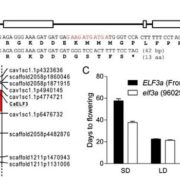
The chickpea Early Flowering 1 (Efl1) locus is an ortholog of Arabidopsis ELF3 ($)
Blog, Plant Science Research Weekly, Research, Research BlogChickpea is a highly cultivated member of the legume family, mostly in India, Australia, Pakistan, Turkey, Burma, Iran, Canada and the US. The detrimental threat for chickpea is the invasion of Ascochyta blight, which is caused by the fungal pathogen Ascochyta rabiei (formerly known as Phoma rabiei). The…
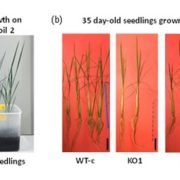
Production of low-Cs+ rice plants by inactivation of the K+ transporter OsHAK1 with the CRISPR-Cas system
Blog, Plant Science Research Weekly, Research, Research BlogNuclear accidents in recent years such as the Fukushima incident during the tsunami in 2011 revealed the detrimental effects of leaked radioactive cesium (Cs) in environmental soil and water. Due to Cs's chemical similarity with potassium, an essential macronutrient for plants, cesium is taken up by…

Field-based species identification of closely-related plants using real-time nanopore sequencing
Blog, Plant Science Research Weekly, Research, Research BlogDNA sequencing was slow before the development of high throughput sequencing. Portable DNA sequencing, which would make sequencing on-site a reality, was impossible until recently. Parker et al. report on the on-site use of MinION from Oxford Nanopore Technologies for DNA barcoding, which yields data…
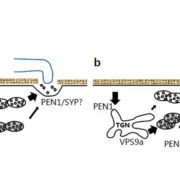
What We're Reading: September 1st
Blog, Research, Research BlogThis week's issue of What We're Reading is guest edited by Arif Ashraf, a PhD student at Iwate University, Japan, and Graduate Student Ambassador of ASPB. His research interest is understanding the hormonal interplay in primary root development of Arabidopsis thaliana. He blogs about plant science at…

Plant Cell Editorial: Journal Impact, Brave New World
Blog, Research, Research Blog, The Plant Cell, The Plant Cell: News0 Comments
/
Latest news on The Plant Cell significance and editorial policies
"Larivière et al. (2016) advocate publishing frequency distribution plots of the citations to provide a clearer view of the underlying data. We agree that showing the underlying frequency distribution of citations “echoes the reasonable…
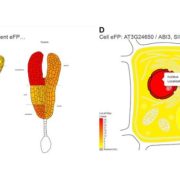
So Much Data, So Little Time: ePlant Steps into the Breach for Plant Researchers
Blog, Research, Research Blog, The Plant Cell, The Plant Cell: In BriefThe ever-increasing amount of data available to researchers has come with similarly increasing cognitive loads in efforts to use these data. Even when data sets are stored in well-curated databases, it can be time-consuming to master the specific tools harbored at each site and cumbersome to move between…
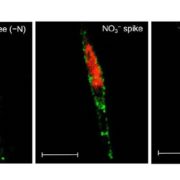
An Emerging Model Diatom to Study Nitrogen Metabolism
Blog, Research, Research Blog, The Plant Cell, The Plant Cell: In BriefCarbon and nitrogen metabolism are intricately linked in all organisms and are tightly regulated to maintain growth, homeostasis, and other cellular activities. In plants and algae, photosynthesis provides both carbon skeletons and the reductant needed for assimilation of inorganic NO3¯ by nitrate reductase…
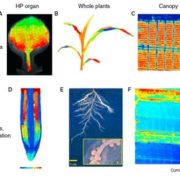
Review: Plant phenomics, from sensors to knowledge
Blog, Plant Science Research Weekly, Research, Research BlogTardieu et al. have written a comprehensive and very readable overview of the current state and future challenges of plant phenomics, which they define as “the development and application of the suite of tools and methods used for three major goals — (1) capturing information on structure, function…
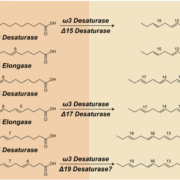
Medicine is not health care, food is health care: Plant metabolic engineering, diet and human health
Blog, Plant Science Research Weekly, Research, Research BlogA diet consisting of a wide range of plant matter is optimal for human heath, but due to various historical and social factors (including the relatively high cost of fresh fruit and vegetables), many people don’t get the nutrients they need. Biofortification of staple foods like rice through breeding…

